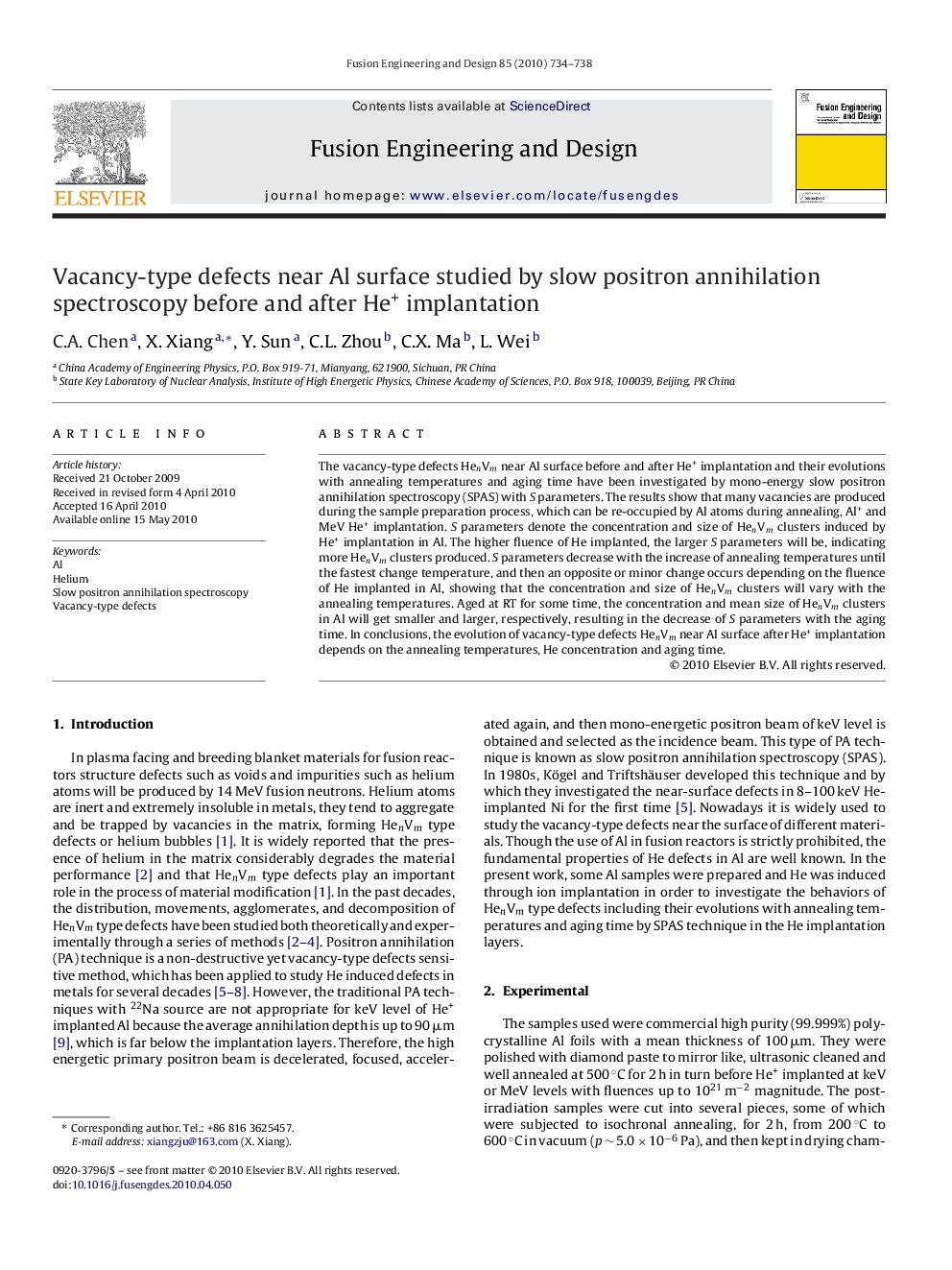| Article ID | Journal | Published Year | Pages | File Type |
|---|---|---|---|---|
| 272601 | Fusion Engineering and Design | 2010 | 5 Pages |
The vacancy-type defects HenVm near Al surface before and after He+ implantation and their evolutions with annealing temperatures and aging time have been investigated by mono-energy slow positron annihilation spectroscopy (SPAS) with S parameters. The results show that many vacancies are produced during the sample preparation process, which can be re-occupied by Al atoms during annealing, Al+ and MeV He+ implantation. S parameters denote the concentration and size of HenVm clusters induced by He+ implantation in Al. The higher fluence of He implanted, the larger S parameters will be, indicating more HenVm clusters produced. S parameters decrease with the increase of annealing temperatures until the fastest change temperature, and then an opposite or minor change occurs depending on the fluence of He implanted in Al, showing that the concentration and size of HenVm clusters will vary with the annealing temperatures. Aged at RT for some time, the concentration and mean size of HenVm clusters in Al will get smaller and larger, respectively, resulting in the decrease of S parameters with the aging time. In conclusions, the evolution of vacancy-type defects HenVm near Al surface after He+ implantation depends on the annealing temperatures, He concentration and aging time.
